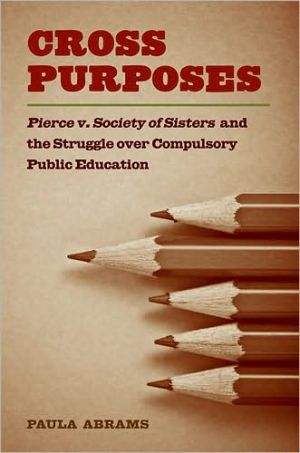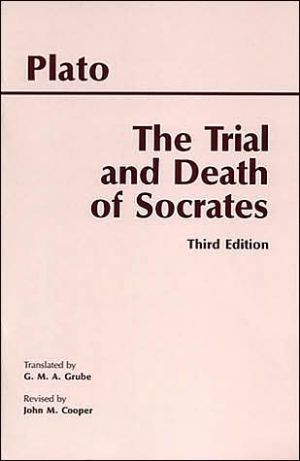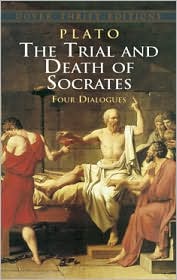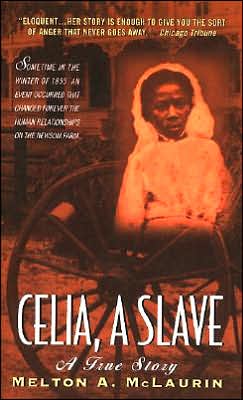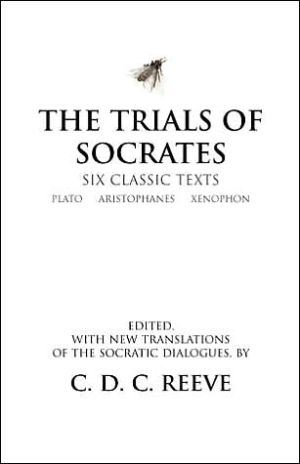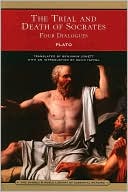Cross Purposes: Pierce v. Society of Sisters and the Struggle over Compulsory Public Education
"A definitive study of an extremely important, though curiously neglected, Supreme Court decision, Pierce v. Society of Sisters."\ ---Robert O'Neil, Professor of Law Emeritus, University of Virginia School of Law\ "A careful and captivating examination of a dramatic and instructive clash between nationalism and religious pluralism, and of the ancient but ongoing struggle for control over the education of children and the formation of citizens."\ ---Richard W. Garnett, Professor of Law and...
Search in google:
Do parents have the right to determine how their children should be educated?
CROSS PURPOSES\ Pierce v. Society of Sisters and the Struggle over Compulsory Public Education \ \ By PAULA ABRAMS \ The University of Michigan Press\ Copyright © 2009 University of Michigan\ All right reserved.\ ISBN: 978-0-472-11700-0 \ \ \ Chapter One\ One Hundred Percent Americanism \ The Oregon School Bill fight was never simply a local issue. The inspiration for the Oregon School Bill came from a resolution adopted at Colorado Springs, Colorado, by the Supreme Council of the Scottish Rite Masons, Southern Jurisdiction, in May 1920. The resolution represented the will of Masons in 33 southern and western states.\ Resolved: That we recognize and proclaim our belief in the free and compulsory education of the children of our nation in public primary schools supported by public taxation, upon which all children shall attend and be instructed in the English language only, without regard to race or creed, as the only sure foundation for the perpetuation and preservation of our free institutions, guaranteed by the constitution of the United States, and we pledge the efforts of the membership of the order to promote by all lawful means the organization, extension, and development to the highest degree of such schools, and to oppose the efforts of any and all who seek to limit, curtail, hinder, or destroy the public school system of ourland.\ The national leadership of the Masons and other supporters of compulsory public education wanted all children in America to attend public schools. Oregon became the center of an unfolding national debate on the merits of compelled public schooling. Many Oregonians called the School Bill the most significant local political issue to agitate the state since slavery, but both the campaign and the ensuing litigation proceeded with a keen awareness of the national attention focused on Oregon.\ The Oregon Masonic Grand Lodge adopted the Supreme Council's resolution in July 1920. The proposal garnered little political attention at the time. Nearly two years later, Republican state senator Charles Hall revived the languishing resolution and made compulsory public schooling the most contentious issue in the May 1922 Oregon gubernatorial primary, in which Oregon's incumbent Republican governor, Ben Olcott, faced primary challenges from five Republicans, including Hall and state senator Isaac Patterson.\ In what the New York Times described as the "most bitter primary campaign in the history of Oregon," Senator Hall emerged as the primary challenger to Olcott. Hall brought compulsory public education to the governor's race by running on the platform "One Public School for All Eight Grades." He aggressively took his message around the state: "The public school is one of the fundamental factors in our system of government. I favor compulsory attendance in the primary grades. Teach pure Americanism to all pupils at an early age. Continue to strengthen and build up this typical American institution."\ While Hall traveled the state proclaiming the virtues of mandatory public schooling, white-hooded figures threatened the nuns and students of St. Mary's Academy when they walked down tree-lined Park Avenue. Some children were curious about the costumed figures, but most were frightened. At night, crosses burned on Portland's Mount Tabor and Mount Scott, on Skinner's Butte in Eugene, and on the hills surrounding smaller communities all over Oregon. These events were not unconnected. The fate of Oregon private schools became entwined with the rise of the most powerful political force in Oregon-the Knights of the Ku Klux Klan. Hall's support for compulsory public education secured him the endorsement of the Klan. Governor Olcott was a bitter enemy of the Klan and an opponent of compelled public schooling.\ The Klan Moves into Oregon\ The Knights of the Ku Klux Klan arrived in Oregon in 1921. They brought with them the "One Flag, One School" campaign, a centerpiece of the Klan's platform of 100 percent Americanism. The Klan oath included a vow to champion public education: "I believe that our Free Public School is the cornerstone of good government, and that those who are seeking to destroy it are enemies of our Republic and are unworthy of citizenship." The Klan's aggressive support of compulsory public schooling would prove to be critical to the passage of the School Bill. The Klan brought to the campaign a formidable state political machine capable of delivering votes.\ Some leading Oregonians, including Governor Olcott, initially underestimated the impact the Klan would have in their state. Kleagle Luther I. Powell, sent by the Klan's highest officer, the Imperial Wizard, proved to be an effective organizer and front man for the Klan; he rapidly recruited the mayor of Medford and so impressed the local paper, the Clarion, that it described the Klan as "the very antithesis of lawlessness." In September 1921, Governor Ben Olcott dismissed the influence of the Klan in Oregon, informing the New York World that "because of wholesome conditions in Oregon, with little discontent and a satisfied people, the Ku Klux Klan ... has made little or no progress and I am informed it is now folding its tent like the Arab and as silently stealing away."\ Governor Olcott quickly came to rue his assessment that the Klan in Oregon made "practically no impression on our people." The Oregon Klan recruited an estimated 20,000 new members statewide from a total population of nearly 750,000. In an address to the National Governor's Conference, Olcott expressed puzzlement that the Klan appealed to Oregonians: "We have not the so-called Catholic menace in Oregon; the Catholic population is comparatively small; we have no so-called Jewish menace in Oregon, because the Jewish population is also comparatively small. Some of the best citizens and the most far-seeing and forward-looking citizens of the state are Catholics and Jews. We have no negro population there, only a total of about 1800 negro votes in the whole state of Oregon."\ Olcott failed to appreciate that the meteoric rise of the Klan in Oregon was not simply about bigotry. The Klan's law-and-order platform resonated with diverse Oregon communities. In the lively port town of Astoria, the Klan successfully attracted citizens who abhorred the flagrant wantonness of the port culture, as well as those who felt threatened by the city's large Finnish population. Anti-Catholic sentiment swelled Klan membership in rural Tillamook, as did fears of labor unrest in a community heavily dependent on timber and dairy. In the urban communities of Portland, Eugene, and Salem, the Klan softened its nativist agenda with an antielitism message designed to appeal to conservative values of working-class and middle-class Protestants.\ The Oregon Klan offered members Protestant solidarity and shared values. It required each applicant to certify that he was a "white male Gentile person of temperate habits, sound in mind, and a believer in the tenets of the Christian religion, the maintenance of white supremacy, the practice of an honorable klanishness and the principles of a pure Americanism." The Klan's aggressive Protestantism resonated with the increasing numbers of religious fundamentalists in Oregon. The Oregonian in Portland reported on local Klan induction ceremonies in February and April of 1922, noting that the over 2,000 inductees came "from all the important walks of life in the city" and included "doctors, lawyers, business men of all kinds, railroad men, clerks, and citizens from other professions and employments." Journalist Waldo Roberts claimed, "Not the bad people of the State, but the good people-the very good people-are largely responsible for the transformation of the Oregon commonwealth into an invisible empire." Benjamin E. Titus, a Portland journalist and briefly a member of the Klan, described the thrill of attending his first Klan meeting as "a feeling that I was now identifying myself with a body of citizens pledged by oaths and ideals as high and as holy as those that bound our forefathers when they founded these United States and consecrated them to liberty and preservation of human rights against all forms of unjust aggression."\ Portland Klan No. 1, the largest chapter in the state, with 9,000 members, became the center of Klan operations in Oregon. Fred Gifford, Exalted Cyclops, brought middle-class respectability to the face of the Klan. In his midforties, with steely gray hair, Gifford left a successful management career at Northwestern Electric Company for Klan leadership, increasing his monthly salary in the process from $250 to $600. Gifford's middle-class roots proved a valuable recruiting tool among Portland's urban middle-class population. Gifford made the School Bill a top priority, and his leverage among this socioeconomic group would yield votes.\ Gifford's influence was due in part to his success in selling the Klan as a legitimate patriotic organization. In March 1922, the Oregon Voter, hostile to the Klan, interviewed Gifford and came away impressed. Gifford's description of the Oregon Klan invoked democracy and nationalism.\ The objects we seek to attain are such that you, as an American citizen, will probably be in harmony with in the main. We are opposed to control of American public affairs by aliens, or by so called Americans whose primary allegiance is to some foreign power. We do not see how any genuine American could differ with us as to this. We are not anti-Catholic or anti-Jew or anti-anything, but pro-American.\ Gifford responded with a smile to charges that the Klan threatened democratic values. He predicted, "After a few years, ... you will not regard the Klan as a menace." The Oregon Voter article concluded by describing Gifford as "the reputed boss of Oregon politics, who within a few years is expected to control pretty much all of the legislative and public offices in the state." In January 1922, Gifford inducted a number of state legislators into the Klan in a secret ceremony held in a Salem hotel.\ Oregonians saw the ascendancy of the Klan confirmed on the front pages of their newspapers. A photo appearing in the August 2, 1921, Portland Telegram shows Gifford and King Kleagle Powell, in full Klan regalia, posing with Mayor Baker, Captain Moore of the Portland police, chief of police Leon Jenkins, district attorney Walter Evans, U.S. attorney Lester Humphrey, Sheriff Tom Hurlburt, and Philip S. Malcolm, inspector general in Oregon for the Supreme Council of the Scottish Rite Masons, Southern Jurisdiction. The two attorneys present later claimed that the Klan tricked the public officials into the photograph. According to the attorneys, the politicians attended a cryptically sponsored reception and agreed to pose for a photograph, only to have the hooded Klansmen pop out from behind the backdrop and into the picture at the last minute.\ Most of the Oregon press watched mutely as the Klan rose to political dominance during 1922. Governor Olcott complained that the Klan had "become so strong that the metropolitan papers of the state said not one word against them." The Salem Capital Journal and the Portland Telegram waged the most aggressive editorial battles against the Klan. The editor of the Capital Journal, George Putnam, described the stakes in Oregon as a debate "over the efforts of unscrupulous grafters to commercialize religious and racial animosities for personal or political profit." A number of other papers, including the Medford Mail Tribune, the Corvallis Gazette-Times, and the East Oregonian opposed the Klan, but the most prominent papers, the Oregonian and the Oregon Journal, stayed silent. The editor of the Medford Mail Tribune, Robert W. Ruhl, blasted his fellow editors for failing to take a stand on the power of the Klan in 1922: "During all this time in at least 80 percent of the newspapers of Oregon there was not the slightest editorial reference to this amazing development."\ The editorial silence stemmed both from the wide support for the Klan and from fear of retaliation. Papers that opposed the Klan felt its wrath. The Klan organized boycotts of opposition press. Advertisers reported visits by Klansmen, letters, and telephone calls, all threatening economic boycotts of their businesses unless they cancelled their advertisements in the targeted papers. Some editors suffered personal harassment, threats to their families, and smear campaigns. The Portland Telegram lost 5,000 subscribers and the lease on its new offices. Despite the meekness of the Oregon press, the Klan's activities in Oregon captured national media attention. In articles and editorials across the country, the national press excoriated Oregonians for their capitulation to the Klan. The failure of many in the local press to challenge the Klan would play a role in the success of the School Bill. Press criticism of the measure, for the most part, would be too little, too late.\ The Klan as Political Machine\ The meteoric ascent of the Klan in Oregon transformed the 1922 political campaigns, shaping the course of the governor's race and the fate of the School Bill. The Klan wielded such clout that the influential Oregon Voter timidly concluded in January 1922, "We would not regard membership ... or activity in the Ku Klux Klan as disqualifying anyone from holding public office, even though we condemn the principles, purpose and activities of the Klan itself." The Catholic Sentinel, a Portland weekly, warned Oregonians that Hall and other supporters of compulsory public education intended to destroy the Catholic schools in the state.\ Klan activities undermined its claims to Protestant propriety. Near hangings and harassment and intimidation of minorities and of businesses that did not support the Klan spread throughout Oregon. Just six days before the primary, Governor Olcott tried to convince Oregonians of the threat posed by the Klan. On May 13, 1922, following a series of night ridings and near lynchings by the Klan in the southern Oregon town of Medford, Olcott issued an anti-Klan proclamation.\ Dangerous forces are insidiously gaining a foothold in Oregon. In the guise of a secret society, parading under the name of the Ku Klux Klan, these forces are endeavoring to usurp the reign of government, are stirring up fanaticism, race hatred, religious prejudice, and all of those evil influences which tend toward factional strife and civil terror. Assaults have been committed in various counties of the state by unknown, masked outlaws, the odium of which has reflected on the Ku Klux Klan. Whether or not these outlaws were connected with that organization is immaterial. Their vile acts demonstrate that the name of the organization may be used for evil purposes and that from the nature of its activities it has the moral effect of causing unthinking and misguided persons to enter into unlawful conspiracies and to perpetrate unlawful deeds.\ In his proclamation, Olcott ordered all law enforcement officers to make vigorous use of the state's antimask law to "insist that unlawfully disguised men be kept from the streets." But hooded figures continued to march through the streets of Oregon communities. At a Klan rally in Salem, an airplane strung with lights in the shape of a cross lit up the darkness, dipping its wings to frighten nearby citizens.\ Klan sympathizers charged Olcott with political opportunism and allegiance to Catholics. A Klan spokesman accused Olcott of "an unwarranted attack bearing all the earmarks of Roman politics." Olcott's proclamation consolidated Klan support for Senator Hall, and Hall came very close to taking the election. Olcott prevailed in the Republican primary, but by less than 600 votes out of the approximately 116,000 cast. The editor of the Oregon Voter observed that "bitter prejudice against the Catholics, based on their supposed domination in political affairs, was the actuating motive for the tens of thousands who supported Hall in May." The Klan in Salem responded to Hall's loss by circulating a letter claiming, "Hall's opponents have stolen the nomination for a candidate whose every recent act has borne the indelible stamp of the Catholic Pope in Rome."\ (Continues...)\ \ \ \ \ Excerpted from CROSS PURPOSES by PAULA ABRAMS Copyright © 2009 by University of Michigan . Excerpted by permission.\ All rights reserved. No part of this excerpt may be reproduced or reprinted without permission in writing from the publisher.\ Excerpts are provided by Dial-A-Book Inc. solely for the personal use of visitors to this web site. \ \
Contents INTRODUCTION One Flag, One School....................1CHAPTER 1 One Hundred Percent Americanism....................7CHAPTER 2 We the People....................15CHAPTER 3 The Entering Wedge....................23CHAPTER 4 Good Enough for All....................36CHAPTER 5 Who Owns Your Child?....................43CHAPTER 6 Romanism....................50CHAPTER 7 Seeing Red....................62CHAPTER 8 The Majority Will....................77CHAPTER 9 A Great Cross....................89CHAPTER 10 Turf....................99CHAPTER 11 A Perfect Storm....................112CHAPTER 12 Delicate and Difficult Questions....................125CHAPTER 13 Take the Scholars....................137CHAPTER 14 An Extravagance in Simile....................144CHAPTER 15 Final Duty and Power....................156CHAPTER 16 The Little Red Schoolhouse....................169CHAPTER 17 Last Refuge....................180CHAPTER 18 A Mere Creature of the State....................195EPILOGUE....................209AFTERWORD Pierce Redux....................219NOTES....................235INDEX....................263
